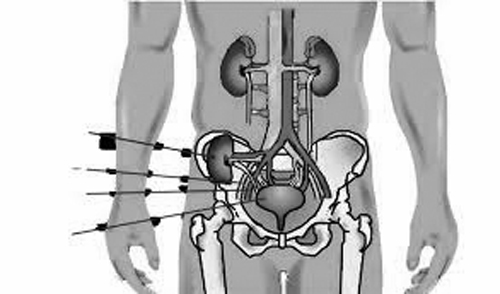It’s a Quiet Revolution
A quiet medical revolution has been taking place in Goa, adiposity largely out of the spotlight, site away from public view. But gone are the days when it was more or less essential to leave our small state for major medical procedures. Perhaps there’s no better illustration of this sea change than kidney transplants. This past Oct. 15, the Goa Medical College marked the two-year anniversary since it began performing the procedure. Nephrologist Dr Tiwari, urologist Dr Prabhudesai and their colleagues put the State on the medical map of India. They have done several live-related transplants since then.
Kidney transplantation provides high-quality life-years to patients with irreversible kidney failure. The transplanted kidneys and their hosts have a survival rate of over 90% in the first year worldwide. Better understanding of drugs (to prevent rejection and fight infections) coupled with improved organ matching and preservation techniques have contributed to the success.
Goa’s first patient, a 17-year-old boy, had to drop out of school dropout because of his health. But then he received his mother’s kidney. Today, he is studying computers. Another gentleman who was not able to work as a laboratory assistant in a college because of dialysis is now back at his job because of his sister’s gift to him: her kidney.
A third example: an Electricity Department employee, father to two pre-teenagers, was desperate. He was dependent on hell-on-earth dialysis and on the verge of losing job and life. His wife stepped forward to donate a kidney. She had to leave children with relatives for two weeks and undergo a surgery herself, but the rewards were handsome. Her husband rejoined work and is now able to enjoy a good family life and bring up his children.
(Live donors are screened carefully before they donate an organ and they are as normal as anyone else once they’ve recovered from the surgery. Yes, we only need one kidney.)
Goa’s population of 15 lakh has 250 individuals added each year to the list of dialysis- requiring patients. At any given time, their total number is over 800.
The average cost of hemodialysis or peritoneal dialysis is around Rs 25,000 per month, which is unaffordable for most. Goa government subsidizes the cost of dialysis up to Rs 13,000 per month. It costs the state 3 crores; only 35% are alive after five years on dialysis, according to Dr Amol Mahalkar, Consultant Nephrologist and Transplant Physician at the Goa Medical College.
Once kidney-function fails (that means both kidneys will not function again, not with any other branch of medicine, not with prayers nor visits to holy men), and transplantation is possible, where does one get another kidney from? Ideally, from a parent, sibling, cousin or child. Our law allows the spouse to donate and anyone who would like to give it out of strong affection to the patient. This last clause has been misused in many states and poor people are made donor bakras for a couple of thousand rupees.
If a relative’s tissue doesn’t match the patient’s, if a relative is not willing to give a kidney, the alternative is to get a kidney from a deceased person. Here’s how:
There are two kinds of death. A cardiac death, when the heart stops beating. Second, brain death, which happens when the brain stops functioning, as in the case of serious head injuries or bleeds inside the skull. Or in rare cases, of primary tumours that kill the brain yet allow other organs to work under certain circumstances. The brain dead patient, in a well-equipped ICU, can be hooked onto a ventilator to keep the air and blood circulating inside the body. The doctors artificially maintain the heartbeat and blood pressure. The instant the ventilator is switched off, the heart will stop. It can’t keep the heart beating for more than a couple of hours anyway.
Brain death is not coma. A patient in coma is alive. S/he gags if a spatula is inserted into the throat. Her/his eyes move if ice-cold water is injected into the ear. There are very special tests which also have to be done. Maintaining a cadaver-donor for organ retrieval is a complicated, highly skilled process. GMC is getting ready for it. Two sets of specialists (neurosurgeons, intensivists) have to carry out tests at least six hours apart before declaring brain death. When that is done, the family of the person can consider donating organs: 2 kidneys, 1 liver, 1 heart, 2 lungs, 2 eyes, the pancreas, the skin… of these GMC can handle eye (cornea) and kidney transplants at the moment.
As in live-related transplants, there is paperwork involved. The medical team has to run against time to retrieve the organs and prepare the recipient (who is always shocked, however pleasantly). An No Objection Certificate has to be obtained from the police. The coroner has to be informed regarding the missing organs at the time of the post-mortem. Most importantly the consent has to be signed by the family of the deceased.
If you wish to donate your organs after death, it’s a good idea to regularly tell close family members about the wish. Carry at all times a small note in the wallet indicating your wish. In case of an untimely death, it reminds the family of your wish and makes it easier to them to sign the consent form.
Some say: “Our religion does not permit this kind of cutting up. We can’t do rites on an incomplete being.” Each religion in India: Hindu, Muslim, Christian, Parsi, Sikh, Jew, believes that giving life to another the ultimate charity.
Recipients are carefully chosen depending on their age, how long they have been on dialysis, tissue and blood matching, and many other points. The patients are chosen in a fair and transparent way and told to rush to the operating theatre for the transplant. Organs retrieved from a cadaver are neither bought nor sold.
After the transplant, patients have to be on a lifelong course of medicines, be careful about not catching infection and always stay in touch with their nephrologist. They can earn a living, attend college, have sex, even take part in sports. The average five year survival after kidney transplant is 75%, more than double that of dialysis patients.
A transplant in the GMC costs the State about Rs 100,000 per patient (this ‘free facility’ is unique in India). That amount would have covered only a few months of dialysis for the same patient.
It will take some time before GMC can start its cadaver program. Every year traffic accidents result in up to 320 deaths on our roads, a majority of them with head injury and brain death. Harvesting and transplanting even 40 % of these will rehabilitate up to 250 individuals, according to Dr Mahalkar.
We’re losing a lot of young lives to rash driving, but that’s another article, for another day.




